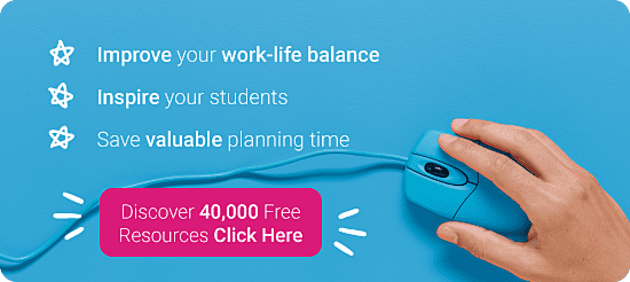


4 min
September 18, 2019
Maths anxiety affects lots of children. Here's one strategy to help them overcome this fear.
From a very young age, it was instilled in me that I’m not good at maths, that it’s only for the ‘clever people’ and those clever people were inherited with the ability to ‘do’ maths. This was due to me thinking that if I don’t understand certain concepts or be able to answer questions quickly, then I wasn’t good enough at maths.
I soon realised that I’m not the only one with these thoughts or feelings and found out that there is an actual name for what I was going through: ‘maths anxiety’.
What is maths anxiety? A person is described as having maths anxiety if they have any of the following when doing maths: emotional or physical effects; fear, low self-esteem, frustration, sweatiness and heart-racing – these are just a few of the symptoms.
This discovery then sparked me to want to find out more on this topic. I began to research how I can improve my maths skills; this started off by spending hours and late evenings reading various literature, watching multiple TED-Ed videos and then moving onto actually setting up and conducting my own enquiry in a classroom setting. All this, only to come to find that the solution was right in front of me (literally).
I realised that I learn best in VISUAL ways and that this is the way forward to not only improve my maths and eliminate those negative perceptions, but to ensure that I portray positive values and findings towards maths for the children that I teach in the future.
The ultimate aim of the Maths Mastery pedagogy is achieving the abstract phase of learning. As stated by researchers Post and Cramer (1989), visual representations enable children to make connections between their own experiences and the mathematical concept and therefore they can gain an insight into the abstract ideas. This means that in order to reach the abstract stage of learning we need to use and successfully appreciate the value of visuals, as reinforced by Berteletti and Booth's 2015 research.
The research shows that there is a specific region in our brain known as the somatosensory area, which deals with the perception and representations of objects and things. So much so that even when we don’t use our fingers in a calculation, we still see a representation of our fingers in our minds.
Highlighting the need for visuals to be at the core of maths teaching to help reach the abstract stage but also to help to eliminate the fear and status differences which commonly traditional problems and teaching methods do. As visuals will support and provide opportunities for more reluctant learners to develop their confidence.
Although the common perception of visuals is portrayed as being childish, my findings and research proves and outlines clear benefits in the classroom and through wider society.
Free
With A Twinkl Subscription
Adding Coins Maths Challenge Cards
Maths Working Wall Display Pack
Our blog is filled with useful advice, top tips, and expert guides.
NQT Survival Guide: How To Succeed In Your First Year As A Teacher
A Guide For NQTs Struggling With Behaviour Management
Have You Tried Our Lovely Assembly Idea Powerpoints Yet?
How Can You Make Teaching Number Bonds Fun?
Introducing Twinkl PlanIt SPELLING!
Writer's Bio
Atifa Ali is a second year undergraduate in BA honours in Primary Education who has chosen maths as her specialism. She is particularly interested in the use of visual resources in mathematics lessons and how they can be used to enhance learning.
